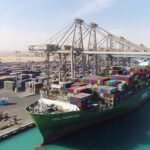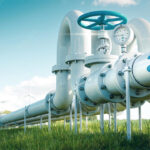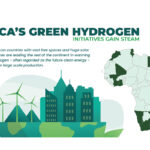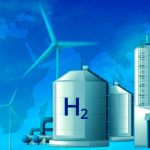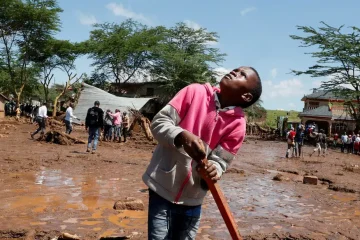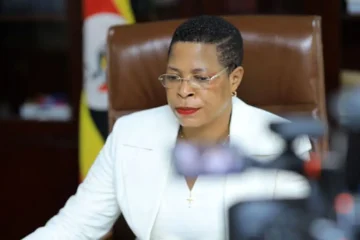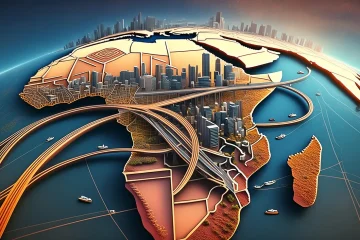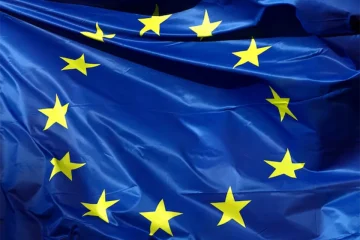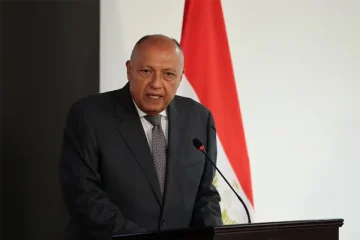WHEN Egypt, a prominent player in green hydrogen development in Africa, recently announced seven new upcoming projects worth US$40 billion to be rolled out over the next decade, it noted that the projects would be positioned in one location: a special economic zone (SEZ).
The new projects announced by Egypt’s cabinet in February, together with ongoing developments not only in Egypt but around the continent, reaffirm Africa’s place as a potential key supplier of green hydrogen, particularly to Europe.
A 2023 report from the European Investment Bank predicts Africa could produce over 50 million tons of green hydrogen annually by 2035. Egypt’s pipeline projects were worth US$83 billion as of August 2023.
What is also emerging as a trend across many African countries investing in the new energy form, however, is the strategic positioning of green hydrogen projects in special economic zones.
According to Penninah Munyaka, a Nairobi-based commercial lawyer and green energy advocate, the reason for this is straightforward: given the heavy capital required to develop green hydrogen projects. host countries are leveraging on their SEZs to expedite the development of green hydrogen.
“Extraction of green hydrogen demands huge capital investments that are prohibitive for developing countries,” she explained.
The cost of production of green hydrogen in developed markets ranges from US$4.10 to US$7 per kg, according to an international energy consultancy company, ET Energy World. These costs are, however, significantly higher in developing markets such as Africa.
According to the Green Hydrogen Organization, achieving global green hydrogen goals by 2050 will require between US$450 and US$900 billion in investment, posing significant challenges for developing markets.
African countries are, however, strategically leveraging tax incentives and other strategic benefits in special economic zones to grow their green hydrogen capacity as the continent looks to be a supplier for developed markets, thanks to its huge green energy potential.
In Egypt’s case, the seven new projects are to be established at the Suez Canal Special Economic Zone.
Yet, they are not the first in a vast economic zone that stretches over 450 million square metres of space nestled between the Red and Mediterranean seas.
President El-Sisi and Norway’s President Jonas Gahr Støre kicked off a 100 MW green hydrogen plant at the Suez Canal Economic Zone during COP 27 in November 2023. India’s ReNew started a 220,000 ton project in the SEZ in 2022.
Over 20 green hydrogen projects were identified in Egypt in a 2023 Rystad Energy report, many of these are in special economic zones. In January 2024, Egypt teamed up with ACWA Power of Saudi Arabia in a US$4 billion green ammonia project, a precursor to green hydrogen production. The Suez Economic Zone was a signatory.
A similar strategy is being pursued by neighbouring Morocco, also a fast-developing green hydrogen hub, with the country targeting 1 GW of green hydrogen power capacity by 2040.
In November last year, Gaia Energy, a green energy company, partnered with FIT Voltaira Morocco, a car and e-bike cable manufacturer, to launch an integrated project that includes a solar PV and green hydrogen plant at the Tanger Med Industrial Platform, a special economic zone.
Morocco World News reported that the mega project will feature a green ammonia plant producing 1.4 million metric tons annually. It will also process 320,000 metric tons of green hydrogen, using a 2 GW solar plant and a 4 GW wind project to provide power.
Green hydrogen projects in special economic zones that are strategically located around ports, such as those in Egypt and Morocco, could play a key role in the transportation and exportation of green hydrogen.
In South Africa, the Freeport Saldanha SEZ is “poised to become one of the first movers to establish a green hydrogen hub in southern Africa,” according to a December article by ESI Africa.
“It has an operational port; there are railway lines; but, importantly, and quite compellingly, it has a steel mill. ArcelorMittal has been operating the steel mill for many years,” Kaashiefah Beukas, the CEO of Freeport Saldanha SEZ, is quoted in the article.
At Coega Special Economic Zone, Hive Hydrogen South Africa, a branch of UK’s Hive Energy, is working on a US$5.8 billion green hydrogen project.
The project already has an offtake partner, a Japanese partner, Itochu Corporation, which, according to a 2023 agreement, will offtake the green hydrogen to be generated from the proposed facility.
The proposed Namakwa Special Economic Zone in the Northern Cape will host a 10-GW electrolyser park and a green ammonia production plant. South Africa’s national ports authority, Transnet, is developing a US$800 million deep-water port, the Boegoebaai deep-water port, and a rail project that will be used to transport and export the green hydrogen to be generated at Namakwa.
The South African Green Hydrogen Commercialization Strategy includes the provision to “include GH incentive schemes for both production and local manufacturing that leverage appropriate SEZ development benefits” and the country’s Atlantis Greentech Special Zone is positioning itself to provide the industrial facilities required to develop green energy infrastructure including for green hydrogen, according to the zone’s CEO, Matthew Cullinan.
Meanwhile, Kenya’s ‘Green Hydrogen Strategy and Roadmap,’ unveiled at last year’s Africa Climate Summit in Nairobi, provides clear directions for investors in the sector, offering incentives through Export Processing Zones and Special Economic Zones.
The Africa Green Hydrogen Alliance, comprising Egypt, Kenya, Mauritania, Morocco, Namibia, and South Africa, aims to produce 30-60 million metric tons of green hydrogen. This could boost their GDP by US$66-126 billion by 2050, amounting to 6-12% of their current GDP, according to the alliance’s website.
“More commercial incentives should be provided while ensuring that the legal frameworks are in place, stable, predictable and capable of nurturing the new industry,” Munyaka shared.
Useful links:- Egypt signs 7 green hydrogen MoUs worth a potential $40 billion
- Turning Africa into green hydrogen “El Dorado” fast-tracks at COP27
- Egypt deal takes its green hydrogen ambitions to the next level

